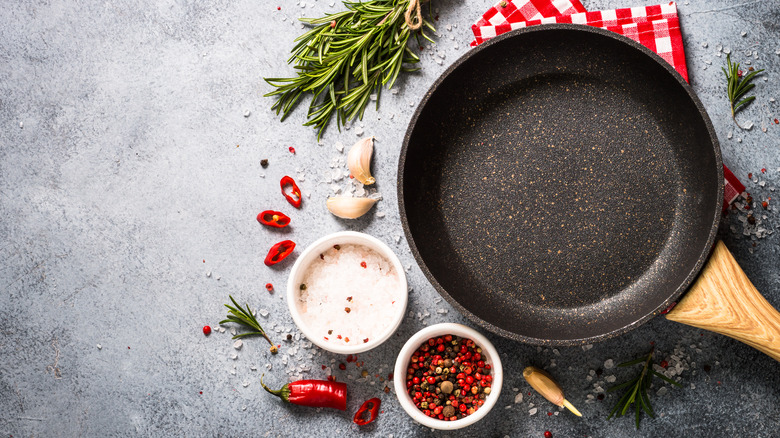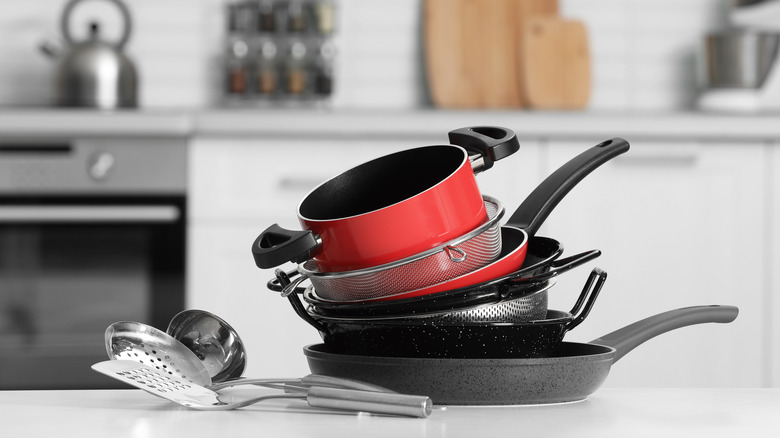Why You Shouldn't Dry Heat Nonstick Cookware
Nonstick cookware deserves to have a place in every kitchen. Even home chefs who live and die by their trusty cast iron pans or dutch ovens know that there are some dishes that are simply better served by a nonstick pan (via Prevention). While it's definitely possible to use a cast-iron skillet, crafting an omelet is just easier in a nonstick pan (via Food Crumbles). Eggs and other high clingy foods have a tendency to stick onto even the most well-seasoned cast iron. Nonstick surfaces however allow the eggs to lift away easily, and create a nice fluffy shell for whatever is going inside. Getting those sticky eggs burnt onto your cast iron might make it tempting to soak it and ruin the seasoning as well.
Cast irons seem to have a reputation for being difficult to manage, but nonstick pans have their own quirks too. That's why it's important to carefully work with nonstick pans in a way that won't cause any dangerous fumes to evaporate from their surface.
Don't leave nonstick high and dry
One important rule with nonstick cookware is to never dry heat it, per Southern Living. Dry heating is when a pan is put onto the stove to heat up before any fats or foods have been added. While this can be done safely (and it's even better to use moderate heat in some cases) with cast iron pans, it can be harmful to nonstick cookware. Nonstick is typically made with relatively thin materials that heat quickly. This means that it can only take a few short moments for the pan to heat to an unsafe level (via Southern Living).
According to Food & Wine, heating a pan without any butter or oil in it can overheat the nonstick coating and even release dangerous fumes or toxins into the air. Nonstick cookware should also never be used over high heat for the same reason. According to The Kitchn, in addition to releasing dangerous fumes, high heat can deteriorate the nonstick coating on the surface of the pan over time.
Next time you're breaking out your nonstick skillet or pan, don't worry about heating it beforehand and avoid the high setting on your stovetop altogether (via Southern Living). Instead, keep things in the medium range, and add some kind of fat or other ingredients shortly after turning on the stove. If you need a high heat sear, Southern Living recommends breaking out that trusty cast iron instead.

